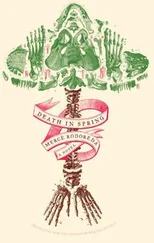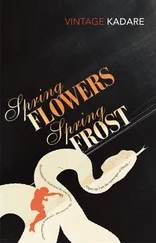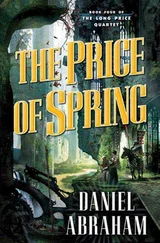Tomoka Shibasaki - Spring Garden
Здесь есть возможность читать онлайн «Tomoka Shibasaki - Spring Garden» весь текст электронной книги совершенно бесплатно (целиком полную версию без сокращений). В некоторых случаях можно слушать аудио, скачать через торрент в формате fb2 и присутствует краткое содержание. Город: London, Год выпуска: 2017, ISBN: 2017, Издательство: Pushkin Press, Жанр: Современная проза, на английском языке. Описание произведения, (предисловие) а так же отзывы посетителей доступны на портале библиотеки ЛибКат.
- Название:Spring Garden
- Автор:
- Издательство:Pushkin Press
- Жанр:
- Год:2017
- Город:London
- ISBN:978-1-78227-273-1
- Рейтинг книги:4 / 5. Голосов: 1
-
Избранное:Добавить в избранное
- Отзывы:
-
Ваша оценка:
- 80
- 1
- 2
- 3
- 4
- 5
Spring Garden: краткое содержание, описание и аннотация
Предлагаем к чтению аннотацию, описание, краткое содержание или предисловие (зависит от того, что написал сам автор книги «Spring Garden»). Если вы не нашли необходимую информацию о книге — напишите в комментариях, мы постараемся отыскать её.
Spring Garden — читать онлайн бесплатно полную книгу (весь текст) целиком
Ниже представлен текст книги, разбитый по страницам. Система сохранения места последней прочитанной страницы, позволяет с удобством читать онлайн бесплатно книгу «Spring Garden», без необходимости каждый раз заново искать на чём Вы остановились. Поставьте закладку, и сможете в любой момент перейти на страницу, на которой закончили чтение.
Интервал:
Закладка:
His father’s cremated remains had been divided between the family grave in his hometown and the Buddhist altar in his mother’s home. Some, which Taro had taken with him and ground up finely, had been scattered off a cape in Ehime Prefecture where his father had often gone fishing.
Carried by the wind, washed away by the waves, those finely ground ashes had soon disappeared. They had been the particles of the same bones whose powder was now stuck inside the mortar. What parts of his father were they? Taro wondered. Had those hard, white pieces of bone he’d put into the mortar really started off in his father’s body? It was crazy to think that those same bones that he’d ground up in there had once been sitting around, walking about. One time, in primary school, Taro had split his forehead open on a metal pole and his classmates had all come up to him, one after another, to stare at the wound. They said you could see bone. Taro himself, though, had never got to see it. He still felt sore about that now.
The beer was too cold. Taro’s refrigerator, which he’d bought second-hand, had been making funny noises recently.
On Friday morning, as Taro was about to leave for work, the woman from the Dragon Flat happened to be passing in front of the door to his flat. With her eyes fixed ahead of her, she didn’t notice him. She continued walking in the opposite direction to the station. Taro paused for a moment. He couldn’t have said what exactly he was thinking about or why, but he found himself following
The woman walked at a leisurely pace. She passed the house next to their block of flats, a building that looked like an enormous vault surrounded by exposed concrete walls, then took a right at the corner. Taro waited until she was out of sight, then approached the corner himself. The vault seemed to have a kind of courtyard within its walls, and the only windows onto the street were extremely small. He’d once caught sight of a Range Rover coming out of the garage door, now firmly shut, but had never seen any of the people who lived there. He stopped at the corner and peered in the direction the woman had gone.
She had stopped in front of the sky-blue house, which was next to the concrete vault, and was stretching her short body as tall as it would go in an attempt to see over the wall. With her neck craned, she moved her head from side to side, then set off walking again, her eyes still focused on the sky-blue house. She was wearing a creased T-shirt and jogging bottoms, with a beanie that he guessed was to cover unkempt hair. It was not the sort of look you would go for if you were expecting to be seen by anyone. In fact, the combination of the hat and her black-framed glasses made her look pretty suspicious. She turned right again, round past the white wall.
The sky-blue house was certainly an eye-catching structure. It looked like the sort of grand, Western-style mansions that had sprung up in certain areas of Japan in the late nineteenth and early twentieth centuries. The horizontal wooden planks were painted a vivid sky blue, and the roof, tiled in terracotta, was a flattish pyramid, with a decoration at the top shaped like the tip of an arrow.
On the white wall that encircled the house, the plasterer’s trowel marks formed a pattern resembling scales. From the narrow road, only the first floor of the house was visible. On the left was the balcony, and on the right were two smallish sash windows that opened vertically. All of the window frames were painted the same colour as the terracotta roof.
The black metal entrance gates were fabricated to look like brambles, and through them Taro could see that the stained-glass window next to the front door also had a plant motif. Some kind of iris or sweet flag, in ultramarine, green and yellow. From his flat, Taro could see the part of the house on the exact opposite side of this entranceway. There was a small stained-glass window there too, with a design of red dragonflies.
The house made Taro think of the ijinkan in Kobe, the foreigners’ mansions he’d once visited on a school trip, though in comparison, this house seemed somehow lacking in harmony. The first impression was one of taste and refinement, but the more he looked at it, the more the roof, the walls, the stained glass, the concrete wall, the gates and the windows began to seem like they’d all been gathered together from different places randomly.
To the left of the gates was a glass nameplate engraved with morio. Taro was under the impression that the house had been uninhabited for at least a year. When had this Morio family moved in? he wondered. A kiddie bike and a tricycle had been left by the front door. Outside the gates and to the left, parked in one of the house’s two allotted spaces, was a smallish car in a shade of blue very similar to that of the house.
The garden took up about a third of the grounds of the house. It was positioned on the side facing away from his block of flats, so Taro couldn’t see it from his balcony. Inside the garden, by the corner in the road, there was a large crepe myrtle tree. Even Taro could recognize it by its smooth trunk, with its patches of bark peeling off in places. A little distance away were two deciduous trees, one medium-sized and one small. Taro had passed the house only occasionally, but he somehow remembered that the crepe myrtle flowered purple, that the medium-sized tree was a white plum, and the small one appeared to be some kind of wild cherry.
When he got to the crepe myrtle, Taro stopped again, and peered around the corner where the woman had disappeared. She was already beginning to turn right by the next corner, thirty metres off. Right, right, right—in other words, she was headed back to their block of flats.
The block where Taro lived was bounded on all sides by streets so narrow that only one car could get through at a time. Looked at from above, the block was divided like a grid into four equal squares. If their block of flats was in the upper left space, then the upper right space was entirely taken up by the concrete vault, the bottom right was the Western-style sky-blue house, and the bottom left was the old wooden house belonging to Mrs Saeki.
The woman had walked a complete circle around that grid. After watching her vanish round the corner, Taro too turned right by the crepe myrtle. When he looked up at the sky-blue house, he saw that both the window that opened onto the balcony and the sash windows had their white blinds down. There was no laundry hanging on the balcony, or any drying racks either.
At the next corner, by the gate to Mrs Saeki’s house, Taro checked once more to be sure of the woman’s movements. He caught sight of her disappearing inside their block of flats, as he predicted. A small white van with the words day service printed on the side was parked in front of Mrs Saeki’s house. Was she returning from the care home, or had something happened to her? He stood in that spot for a while but saw no one going in or coming out, and couldn’t hear anything, so he set off walking again, not turning the corner back to the flats but heading straight, in the direction of the train station.
The next time Taro saw the woman was on Saturday, just after sundown. A slight rain was falling. The man from the Dog Flat, next to Taro’s, had moved out that day, and the moving company had been there since the early morning. The flats were built of wood and offered little protection from sound, so Taro had found himself unable to take a nap while the movers were knocking around. It was just when things had finally fallen quiet, and Taro was beginning to doze off, that his intercom buzzer rang.
He could hear voices coming through the kitchen window that faced onto the outside corridor, but he picked up the phone to the intercom anyway, and heard a female voice say,
Читать дальшеИнтервал:
Закладка:
Похожие книги на «Spring Garden»
Представляем Вашему вниманию похожие книги на «Spring Garden» списком для выбора. Мы отобрали схожую по названию и смыслу литературу в надежде предоставить читателям больше вариантов отыскать новые, интересные, ещё непрочитанные произведения.
Обсуждение, отзывы о книге «Spring Garden» и просто собственные мнения читателей. Оставьте ваши комментарии, напишите, что Вы думаете о произведении, его смысле или главных героях. Укажите что конкретно понравилось, а что нет, и почему Вы так считаете.












